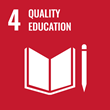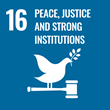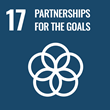
Project information
Continuity and Rupture in Central European Art and Architecture, 1918-1939 — CRAACE
(CRAACE)

- Project Identification
- 786314
- Project Period
- 4/2019 - 2/2024
- Investor / Pogramme / Project type
-
European Union
- Horizon 2020
- ERC (Excellent Science)
- MU Faculty or unit
-
Faculty of Arts
- Matthew Rampley, B.A., Ph.D.
- Mgr. Marta Filipová, Ph.D.
- Julia Secklehner, M.Phil., Ph.D.
- Nóra Veszprémi, Ph.D.
When new political elites and social structures emerge out of a historical rupture, how are art and architecture affected? In
1918 the political map of central Europe was redrawn as a result of the collapse of Austria-Hungary, marking a new era for
the region. Through comparative analysis of the visual arts in 3 states built on the ruins of the Habsburg Empire (Austria,
Hungary and [former] Czechoslovakia), this project examines how such political discontinuity affected art and architecture
between 1918 and 1939. The project is organised into 4 themes, each resulting in a monograph:
1. Vernacular modernisms, nostalgia and the avant-garde
2. Presenting the state: world fairs and exhibitionary cultures
3. Piety, reaction and renewal
4. Contested histories: monuments, memory and representations of the historical past
It is the first systematic and comprehensive trans-national study of this type, based on the claim that the successor states
to Austria-Hungary belonged to a common cultural space informed by the shared memory of the long years of Habsburg
society and culture. The project focuses on the contradictory ways that visual arts of artists and architects in central Europe
adapted to and tried to shape new socio-political circumstances in the light of the past. The project thus examines the long
shadow of the Habsburg Empire over the art and culture of the twentieth century.
The project also considers the impact of the political and ideological imperatives of the three successor states on the visual
arts; how did governments treat the past? Did they encourage a sense of historical caesura or look to the past for
legitimation? How did artists and architects respond to such new impulses? In answering these questions the project
analyses the conflicts between avant-gardes and more conservative artistic movements; the role of the visual arts in
interwar memory politics; the place of art in the nexus of religion, national and state identity.
Sustainable Development Goals
Masaryk University is committed to the UN Sustainable Development Goals, which aim to improve the conditions and quality of life on our planet by 2030.
Publications
Total number of publications: 187
2023
-
ARTWORK OF THE MONTH, AUGUST 2023: BOBBIN LACE BY EMILIE PALIČKOVÁ MILDE (1939)
Year: 2023, type: Popularization text
-
ARTWORK OF THE MONTH, FEBRUARY 2023: PORCELAIN TABLEWARE BY LADISLAV SUTNAR (1932)
Year: 2023, type: Popularization text
-
ARTWORK OF THE MONTH, JULY 2023: THE NAPRAFORGÓ STREET HOUSING COLONY (1931)
Year: 2023, type: Popularization text
-
ARTWORK OF THE MONTH, JUNE 2023: STAINED-GLASS WINDOW WITH THE LIFE OF SAINT STEPHEN BY LILI SZTEHLO (1938)
Year: 2023, type: Popularization text
-
ARTWORK OF THE MONTH, MARCH 2023: CHARLES BRIDGE IN PRAGUE BY OSKAR KOKOSCHKA (1934)
Year: 2023, type: Popularization text
-
ARTWORK OF THE MONTH, NOVEMBER 2023: DYNAMIC OF THE METROPOLIS BY LÁSZLÓ MOHOLY-NAGY (1921–22/1924/1925
Year: 2023, type: Popularization text
-
Building for the Departed: Free Thinking, Secular Politics and Crematorium Design in Central Europe, 1873-1932.
THE GOVERNANCE OF STYLE. PUBLIC BUILDINGS IN CENTRAL EUROPE, CA. 1780-1920, year: 2023, number of pages: 18 s.
-
But Which Women is it for? Exhibiting Gendered Spaces in Interwar Central Europe
Year: 2023, type: Appeared in Conference without Proceedings
-
Composing the Folk: The Role of Stage Design in Interwar Rural Photography
Year: 2023, type: Appeared in Conference without Proceedings
-
Eine andere Moderne? Neue Frauen am Land in den 1930er-Jahren
Zeitgeschichte, year: 2023, volume: 50, edition: 1, DOI




